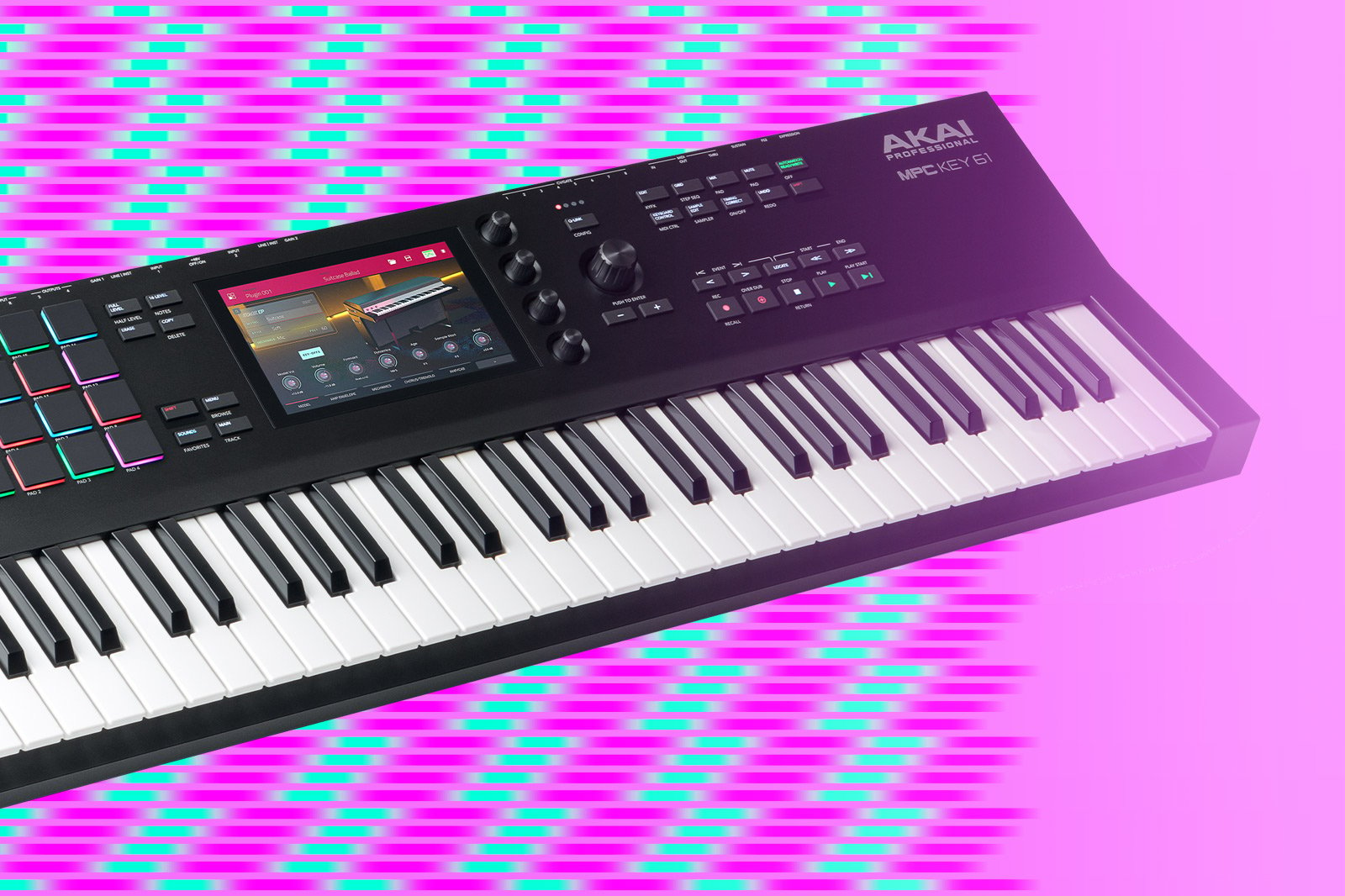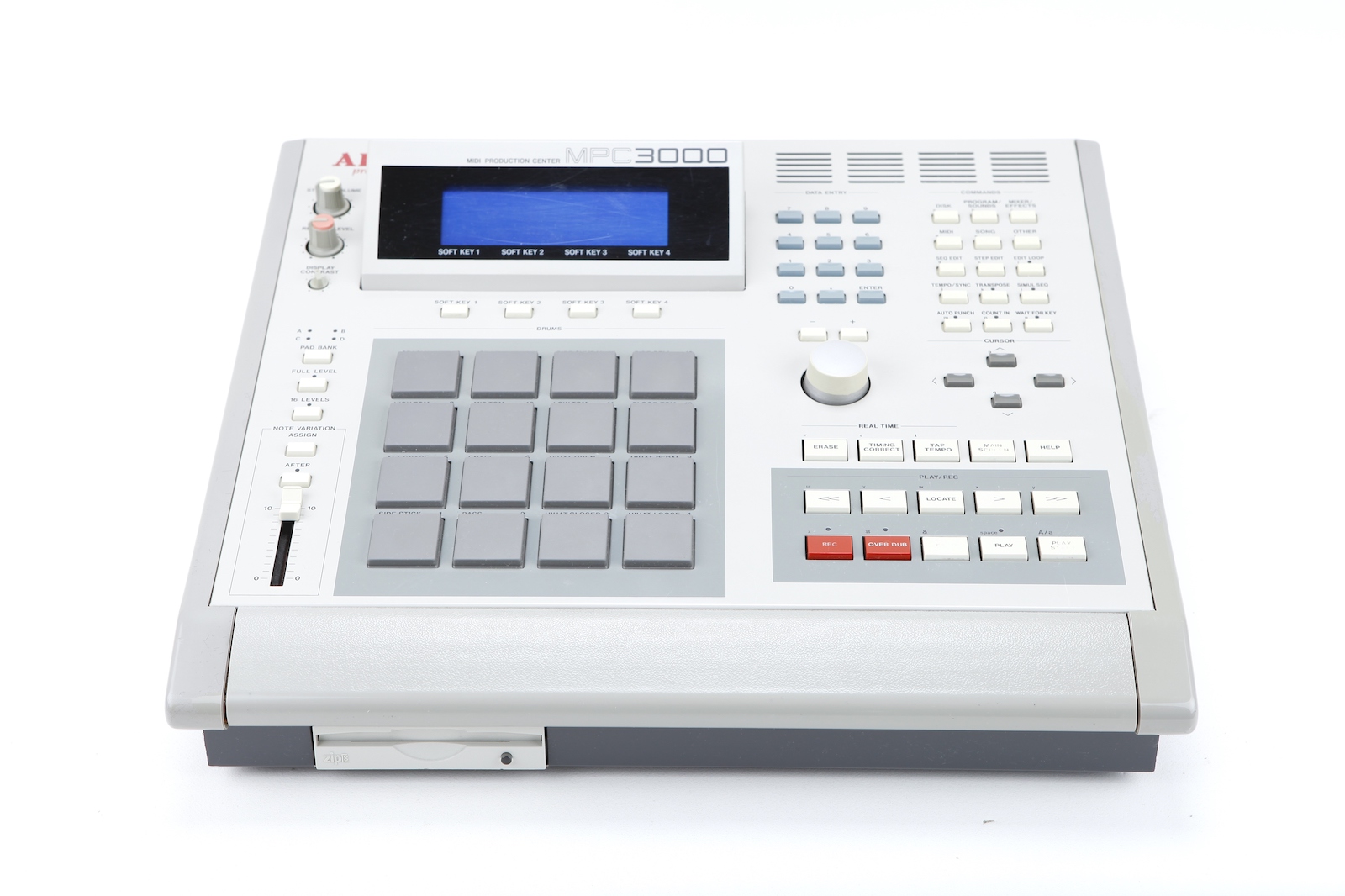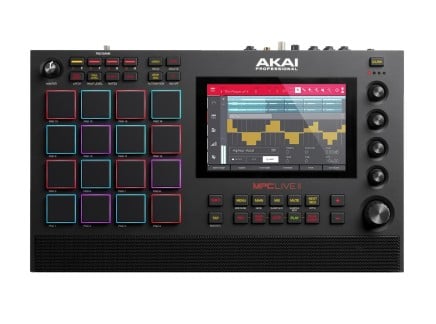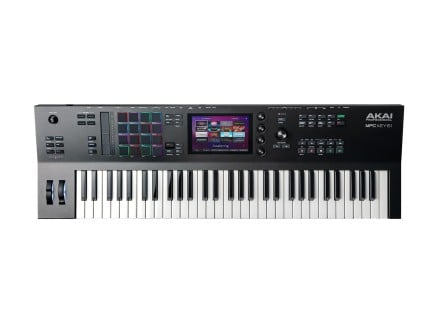Given the ever-increasing capabilities of hardware technology, the last few years have seen the release of more and more devices designed to be used as standalone platforms for music production. More of us find ourselves wanting to get away from the noise and distractions that can be had on general computers, and this new wave of standalone instruments is finally starting to match the flexibility and power of DAWs.
Few have long championed this approach to music making as well as Akai and their family of MPC instruments. The MPC's emphasis on immediacy with no prerequisite knowledge of music broke down entry barriers and got more people into making music. In fact, the rise of hip hop can in many aspects be attributed to the success of the MPC design, which has continued to grow and evolve to this day. Now, the MPC game has changed once again with the release of the MPC Key 61—the first-ever MPC with a built-in keyboard. Let's unpack all of the new features, and see how this new instrument fits into the MPC legacy.
The Modern MPC Lineup
Looking at the landscape of music technology, quite a lot has changed since the first MPC was released way back in 1988. While legacy samplers like the original MPC60 and MPC3000 are still loved by many musicians and producers across the world, their capabilities are a far cry from contemporary DAWs and music software. Because computers, smartphones, and tablets have become so ubiquitous, the last decade saw Akai shift the MPC paradigm into software—occasionally paired with a hardware controller to retain the immediacy of physical touch, like in the case of the MPC Renaissance. Though it was seen as something of a departure from their roots at the time, it's clear now that Akai was simply setting the stage for things to come a few years down the road.
That's exactly what happened in 2017, when Akai returned to the MPC to standalone form with not just one, but two offerings: the flagship MPC X and the MPC Live, now in its second iteration. This time around, these super-charged MPCs can stand toe-to-toe with DAWs, but their existence in a dedicated device for music-making eliminates many of the distractions and frustrations felt by general computer hardware and operating systems. There's no fuss with drivers, ill-timed OS updates, email notifications, or anything of that nature—just 100% focus on music, all the time.
With these two later joined by the MPC One, all three devices in the MPC lineup provide the same general workflow, as they run the same software and simply differ in their physical form factor and hardware ports. Their bold touchscreen lets you keep your eye on your tracks and navigate through your sessions, while the classic 4x4 grid of pads with RGB lighting offer the tactile means to record beats, trigger samples, and more. Best of all, these MPCs don't have to be a solo act—each one provides audio inputs to sample other instruments, MIDI ports for sequencing other synths, USB host and device ports to interface with controllers and computers, and even CV/Gate outputs for controlling Eurorack modular synthesizers.
Though a lot has changed over the years, Akai's current line of MPC instruments stays true to the original goal of the MPC series, which is to provide a compelling and immediate music-making experience all in one box. And now, they're joined by the MPC Key 61.
MPC Key 61 Overview
With this new entry in the MPC family, Akai shows off a different perspective to the Music Production Center than what was established by their prior instruments. Of course, a large part of that difference comes from the fact that this is the first MPC model to feature a keyboard: a full-sized, semi-weighted keybed with 61 notes and aftertouch, at that. The traditional MPC-style pads remain, along with a Touch Strip controller, four Q Link knobs and transport navigation buttons, but the inclusion of the keyboard suggests an alternative aim for this particular model—one that's more inclined for chords and melodic elements.
To that end, Akai also bumped up the processing power inside the MPC Key 61 to handle an all new set of plugin instruments—25 of them, in fact—ranging from pianos and strings to FM synthesis and other powerful sound engines. There's plenty of room to dive into sound design, but a generous library of over 6000 factory presets means that when you're in a pinch, the sound you need is probably already there. And to further bolster the plugin instruments, there's also over 100 effects, including delays, reverbs, compressors, and even lofi processors. Plus, if you're tracking vocals, tuning and harmonizer plugins are available, on top of MPC60 and MPC3000 emulators for adding vintage flavor to any audio source.
But at the end of the day, this is still an MPC, so this instrument still draws from the same pool as the MPC X, One, and Live II. All of the capabilities for recording, sampling, and sequencing remain intact on the MPC Key 61, whether you're working with acoustic instruments, drum machines, or external MIDI controllers. In particular, two audio inputs support line, instrument, and even microphone sources, with the option for phantom power. And like the other current members of the MPC family, the eight assignable CV/Gate outputs can be used to incorporate modular gear into your workflow—perfectly tying in experimental sounds and effects processing with beats and melodies. Beyond hardware, the included MPC2 software allows for seamless integration with a computer, with the MPC Key 61 providing everything you'd need in a controller.
The 61 Keys to Success
Even with standalone use as a primary design goal, the MPC Key 61 is clearly a team-player that's ready to join any studio. Modern studios are diverse, with more options than ever before to see musical ideas through to completion. It's only fitting that a centerpiece of such a setup should be able to interface with other pieces of equipment, all while keeping the flow of ideas healthy and strong. We see the MPC Key 61 as another strong entry in Akai's catalog, and one that just might change the course of the MPC legacy.













